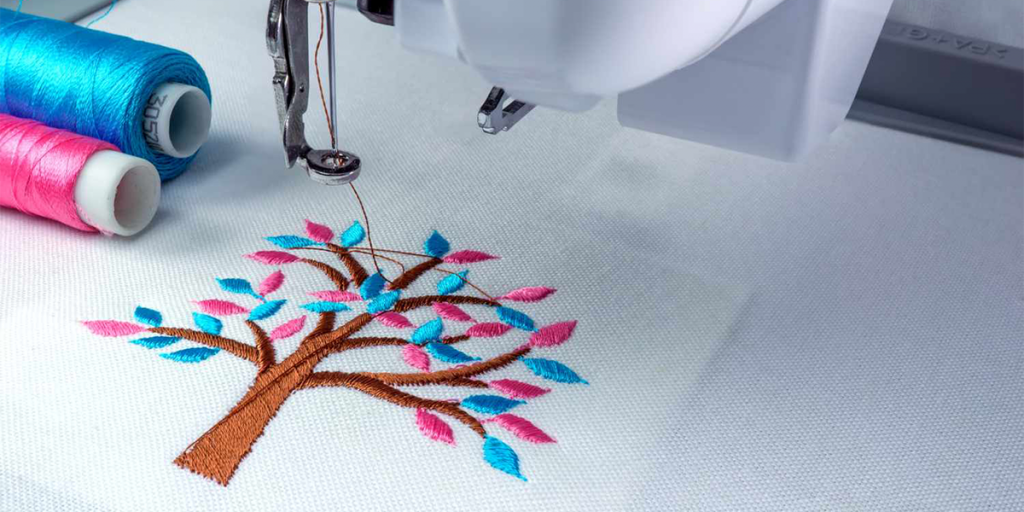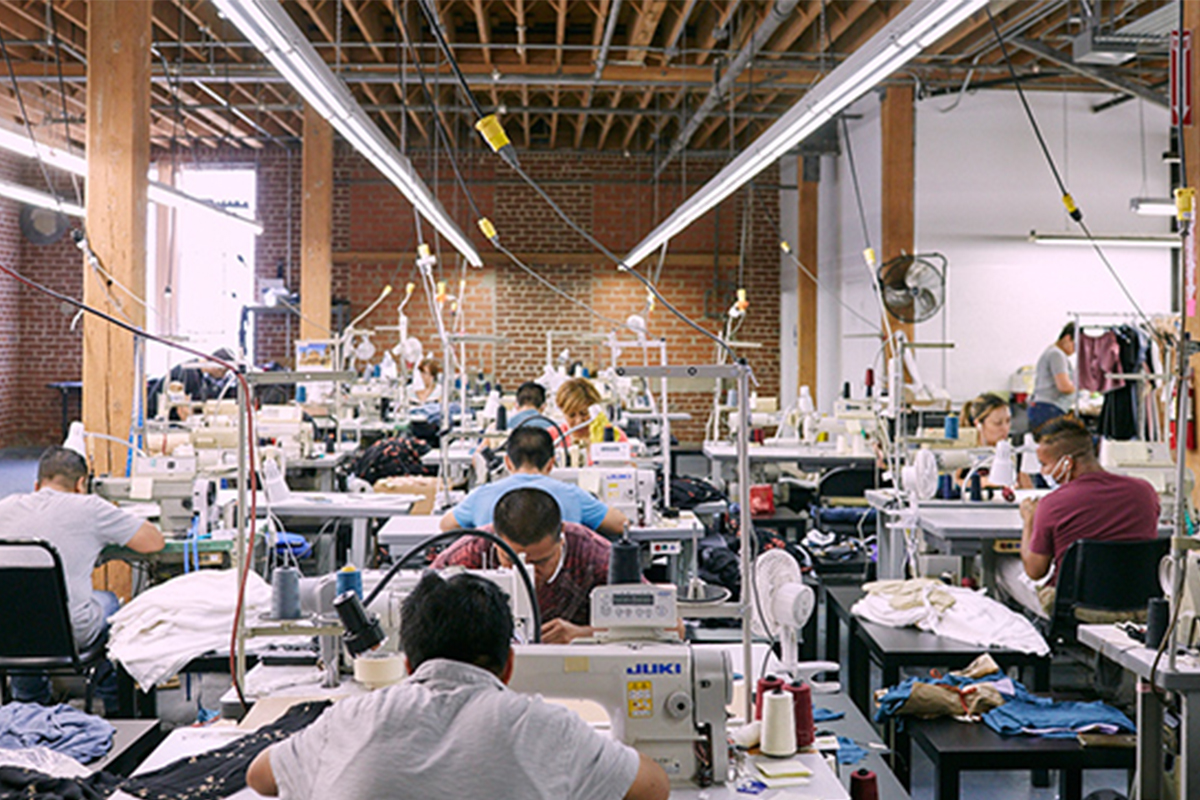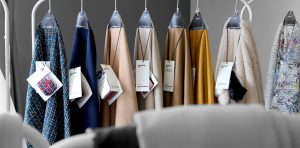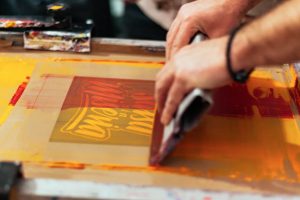Made-to-order clothing isn’t just a trend; it’s a revolution in how we think about fashion. If you’re looking to embark on this exciting journey, AVmade is here to guide you every step of the way.
Overview of the Industry
The made-to-order clothing industry has witnessed growth in recent years. This growth is attributed to a shift in consumer preferences towards unique, high-quality garments that minimize waste and fast fashion. In contrast to fast fashion models, made-to-order ensures each piece is crafted to meet brands preferences, fostering both exclusivity and sustainability.
Niche Targeting and Market Research
Every brand has its unique story and vision. To succeed in the made-to-order clothing realm, it’s essential to identify and understand your target audience. This doesn’t merely mean demographics but diving into their values, desires, and pain points. Tools and insights from platforms like AVmade.com can offer invaluable data, allowing you to tailor your made-to-order clothes to the exact needs and aspirations of your audience.
In today’s ever-evolving fashion landscape, the demand for unique, tailored experiences has skyrocketed. For brands looking to make a mark, turning to made-to-order clothing is a strategic choice. However, the success of this venture largely hinges on choosing the right manufacturer.
Made-to-order clothing is not merely about customizing designs but embracing a brand’s vision, ethos, and narrative. As brands seek to offer personalized garments that resonate with individual stories, partnering with a manufacturer who understands and values this vision is crucial.

Consider this: A brand aiming to cater to eco-conscious consumers needs a manufacturer proficient in sustainable and ethically-sourced materials. Similarly, a brand targeting the luxury market will require craftsmanship and attention to detail unparalleled in standard clothing lines.
But where does one start in the vast sea of manufacturers? Platforms like AVmade.com simplify this journey. We offer insights, cutting edge trend, unparalleled quality and data-driven analytics, ensuring brands connect with manufacturers that align with their goals and values.
It’s not just about producing clothing; it’s about co-creating a vision. The nuances of fabric selection, design precision, scalability, and quality control are elements that a manufacturer must handle deftly. A partnership should extend beyond business, becoming a collaborative effort in storytelling.
In the realm of made-to-order clothing, the distinction lies in details. By choosing a manufacturer who not only provides quality but also shares a brand’s passion and story, you elevate your brand from being just another label to a memorable fashion narrative.
Steps in the right direction
Embarking on the journey of becoming a made-to-order clothing manufacturer can be a transformative endeavor. To ensure success, a well-defined roadmap is imperative. Here are key milestones to consider:
- Establish a Clear Vision:
- Purpose and Positioning: Begin by introspecting. What does your brand stand for? Is it the seamless blend of traditional craftsmanship with contemporary designs? Or perhaps you’re positioning yourself as a beacon of sustainability in the world of fast fashion.
- Target Audience: Understanding your audience is paramount. Whether you’re targeting young professionals looking for ethical workwear or fashion-forward individuals seeking unique statement pieces, your brand vision should resonate with their values and aspirations.
- Material Selection:
- Ethical : Today’s consumers are well-informed and conscious about their choices. Ensure that the materials and manufacturing practice you use are ethically sourced. This not only builds trust but also elevates your brand’s image in the market.
- Quality over Quantity: While it might be tempting to go for cheaper options, remember that the longevity and feel of your garments directly reflect your brand’s reputation. Premium quality materials and made-to-order clothing manufacturers can set you apart from competitors and foster brand loyalty.
- Digital Platform:
- Build a Robust Online Presence: In the digital age, an online platform isn’t just a marketplace; it’s the face of your brand. Investing in a user-friendly, aesthetic, and functional made-to-order clothing website is non-negotiable. This serves as a digital showroom, allowing potential clients to browse collections, understand your brand story, and place orders seamlessly.
- Engage and Educate: Use your platform not just for sales but to educate visitors about your processes, materials, and ethos. Incorporate blogs, videos, and testimonials. Engage with your audience through interactive sessions, virtual tours, or behind-the-scenes glimpses.
Understanding Your Customer
In the dynamic sphere of fashion, understanding your consumer is the keystone of success, especially in the made-to-order segment. Custom clothing promises exclusivity, and to truly capitalize on its potential, brands need to grasp the deeper desires and values of their customers. Here’s how to embark on this insightful journey:
- Value Proposition:
- Uniqueness in a Sea of Uniformity: In a market flooded with mass-produced garments, made-to-order clothing offers the allure of distinctiveness. Every stitch and seam tells a story, making the wearer not just a consumer but a part of a brand’s narrative.
- Quality and Craftsmanship: Beyond the personalized fit, customers seek superior craftsmanship. They value the assurance that their garment has been crafted with attention and care, ensuring durability and a pristine finish.
- Target Demographics:
- Deep Dive into Data: It’s essential to go beyond superficial metrics like age or gender. Delve into purchasing patterns, online browsing behaviors, and even social media interactions. Platforms specializing in data analytics can unveil patterns and preferences that might otherwise go unnoticed.
- Psychographic Profiling: Understanding the lifestyle, values, and aspirations of your audience can be a game-changer. Does your demographic value sustainability? Or are they more inclined towards luxury and opulence? These insights shape not just product offerings but also marketing strategies.
- Feedback Channels:
- Active Listening: In the realm of made-to-order clothing, feedback isn’t just about addressing grievances; it’s a goldmine of insights. By actively seeking and listening to feedback, brands can refine their offerings and anticipate emerging trends.
- Leverage Technology: Utilize digital platforms and tools to facilitate feedback. From simple online surveys to more interactive platforms like feedback forums or social media polls, ensure that your customers have multiple avenues to voice their opinions.
Selecting the Right Manufacturers
Venturing into the world of made-to-order clothing hinges significantly on the manufacturers you align with. These partnerships are the bedrock of your brand’s reputation and customer satisfaction. Here’s a breakdown of the crucial considerations when selecting the right manufacturing partners:
- Quality over Quantity:
- Craftsmanship as a Benchmark: In the world of custom clothing, cutting corners is not an option. Seek manufacturers who share your dedication to quality and have a track record of meticulous craftsmanship.
- Material Integrity: The essence of a garment lies in its fabric. Ensure that your manufacturer sources premium, durable materials that align with your brand’s ethos, be it sustainable, luxury, or any other niche you’re targeting.
- Sample Production:
- Prototyping is Key: Before scaling to full production, the creation of prototypes or samples is pivotal. This ensures that the design sketches translate accurately into tangible products, maintaining design integrity and fit.
- Feedback and Iteration: Use these samples to gather feedback – from potential consumers, peers, or even within your team. This iterative process helps refine the product until it aligns perfectly with your brand’s vision.
- Building Relationships:
- Open Communication: An effective partnership thrives on transparent communication. Establish regular check-ins, be clear about expectations, and remain open to feedback from the manufacturing side.
- Shared Goals and Vision: While transactions can be purely contractual, the most enriching relationships form when both parties share a unified vision. When your manufacturer is invested in your brand’s success, it reflects in the quality of the products they produce.
- Ethical Considerations: Aligning with manufacturers who practice ethical production and fair labor practices not only uplifts your brand’s image but also ensures sustainable, long-term relationships built on mutual trust and respect.
Building a Digital Presence
In today’s era, the digital realm is a bustling marketplace, teeming with potential clients and competitors alike. For businesses in the made-to-order clothing segment, a strategic and aesthetically appealing online presence is paramount. Here’s how to ensure your digital platform not only stands out but also resonates with your target audience:
- Essential Features for a Made-to-Order Website:
- Interactive User Interface: Your website should be more than just a digital storefront; it should be an interactive platform where customers can play, visualize, and design their desired outfits.
- Branding Consistency: The design, tone, and user experience of your website should consistently mirror your brand’s ethos, values, and aesthetic. This consistency reinforces brand recall and loyalty.
- Mobile Optimization: With a significant portion of users accessing websites via mobile devices, ensuring a smooth mobile experience is critical.
- Platforms Specializing in Customization Interfaces:
- Tailored Tools: Platforms like Shopify or WooCommerce often have plugins or extensions specifically designed for made-to-order clothing brands. These tools allow you to customize things to make it on brand.
- Effective Marketing and SEO for Online Visibility:
- Content is King: Regularly publishing high-quality content, be it blogs, lookbooks, or customer testimonials, not only enhances SEO but also establishes your brand as a thought leader in the made-to-order clothing industry.
- Keyword Integration: Strategic placement of high-traffic keywords, like “luxury made-to-order apparel” or “custom-fit clothes”, can significantly boost your website’s search engine ranking. This doesn’t just drive traffic; it attracts the right kind of audience.
- Social Media Synergy: Platforms like Instagram, Pinterest, and Facebook are goldmines for clothing brands. Engaging posts, interactive stories, and shop-able links can exponentially expand your digital reach and customer base.
Pricing Strategies
The art of pricing, especially in the made-to-order clothing sector, is intricate and multi-faceted. It requires a fine balance between production costs, market demand, brand value, and the unique appeal that bespoke clothing offers. Here’s a dive into crafting a pricing strategy that captures both value and viability:
- Factors to Consider:
- Production and Operational Costs: These are the foundational costs, which include materials, labor, manufacturing, and overhead expenses.
- Perceived Brand Value: In the made-to-order clothing niche, value goes beyond just the product. It encompasses the personalized experience, the exclusivity, and the brand’s overall ethos.
- Market Dynamics: An understanding of competitors’ pricing, market demand, and the consumer’s willingness to pay is pivotal. Periodic market research can offer insights and help adjust pricing strategies accordingly.
- Balancing Profitability with Competitiveness:
- Market Penetration: For newer brands, competitive pricing can be a way to penetrate the market and gain a customer base.
- Premium Positioning: If your made-to-order clothing offers superior quality, unique designs, or artisanal craftsmanship, positioning it as a premium brand with a higher price point can create a niche clientele that values exclusivity.
- Offering Tiered Products or Services:
- Entry-Level Products: These can be basic designs or materials, offering a taste of your brand’s quality at a more accessible price point.
- Mid-Tier Offerings: A balance between premium and basic, catering to those who seek a touch of luxury but are also cost-conscious.
- Premium Range: Exclusively designed, employing the finest materials and craftsmanship, targeting those who view their clothing as a reflection of their identity and are willing to invest in the experience.
In the made-to-order clothing landscape, pricing is more than just a number. It’s a reflection of the brand’s promise, the quality of the product, and the experience it offers. A well-thought-out pricing strategy can enhance brand perception, customer loyalty, and overall profitability.
Green Threads: Sustainability
In an era marked by environmental consciousness and ethical consumerism, brands that incorporate sustainability are not only contributing positively to the planet but are also positioning themselves in the heart of consumer preferences. This holds especially true for the made-to-order clothing industry.
- Understanding the Sustainable Advantage:
- Waste Reduction: The model is simple yet impactful—produce only when there’s a demand. This means fewer resources are wasted, and there’s no unsold inventory heading for landfills.
- Reduced Carbon Footprint: With less mass production, the energy consumption and emissions are naturally decreased.
- Sustainable and Ethically-Produced Materials:
- Eco-Friendly Fibers: Opt for materials like organic cotton, Tencel which have a lower environmental impact.
- Ethical Production: Beyond just the environment, ensure that the labor practices involved in producing your materials adhere to fair wage standards and offer humane working conditions.
- Communicating Your Sustainable Efforts to Customers:
- Educational Content: Use blogs, videos, or infographics to inform customers about the environmental and ethical impact of their purchases.
- Engage & Involve: Encourage feedback and even involvement from your audience in your sustainability initiatives. This could be through surveys, community events, or even collaborating on upcycling projects.
For a made-to-order clothing brand, sustainability isn’t just an added bonus—it’s an integral part of the brand identity. In weaving together fashion with ethics, brands can craft a narrative that’s not only trendy but also timeless in its impact.
Managing Production Flow
As a brand owner in the made-to-order clothing industry, it’s imperative to understand and navigate the multifaceted production process. Each garment becomes a personalized embodiment of our brand’s promise and our customer’s desires. Here’s what every brand owner must know and act upon to ensure success:
- Essential Steps in the Made-to-Order Process:
- Receiving and Reviewing Orders: Upon an order placement on our made-to-order clothing website, promptly review the details. Accuracy from the get-go is vital to avoid discrepancies later.
- Coordination and Communication: Ensure that order specifications are relayed flawlessly to the production team. From design to size specifications, clarity in communication will guarantee a smoother production flow.
- Quality Assurance Checks: Before dispatching, rigorously inspect each piece. It’s essential to maintain and even exceed the standards that your brand has set.
- Addressing Peaks in Demand:
- Anticipating Surges: By analyzing past sales data and market trends, prepare for potential order surges. This foresight can help in preemptively scaling up resources.
- Streamlining Order Management: Develop an efficient system to categorize and prioritize orders. Whether it’s based on urgency or design complexity, this system will ensure timely fulfillment without quality lapses.
- Keeping Customers Informed: If there are potential delays, let customers know in advance. Honest communication can help maintain trust, even in the face of hiccups.
- Ensuring Timely and Safe Deliveries:
- Investing in Packaging: The unboxing experience can significantly impact brand perception. Opt for packaging that is both protective of the garment and reflective of your brand’s aesthetic and values.
- Collaborating with Reliable Logistic Partners: The production journey doesn’t end at your door—it ends at the customer’s. Ensure you partner with trustworthy logistics providers to guarantee timely and safe deliveries.
- Encourage and Absorb Feedback: Once the product reaches the customer, actively seek feedback. This insight is invaluable in refining both the product and the entire made-to-order process.
Venturing into the made-to-order clothing sector is both an art and a science. By mastering the production flow, a brand owner can not only guarantee superior product quality but also a seamless and memorable experience for every customer.
Ensuring Consistency and Reliability
For brand owners diving into the made-to-order clothing realm, consistency and reliability aren’t just buzzwords—they’re the lifeblood of customer trust and brand loyalty. Here’s a guide on what you, as a brand owner, need to ensure:
- Rigorous Quality Assurance:
- Spot Checks: Periodically review batches of your products to ensure they meet your set standards.
- Material Consistency: Source from trusted vendors who guarantee the same quality over time.
- Customer Experience Management:
- Returns and Alterations: Offer a clear, hassle-free process. Even if a customer is initially unsatisfied, how you handle their concerns can solidify their loyalty.
- Feedback Loop: Implement systems to collect, review, and act upon customer feedback. This provides valuable insights and shows customers that their voices matter.
- Team Communication and Training:
- Regular Briefings: Keep your team informed about brand standards, changes, and goals.
- Skill Development: Invest in workshops and training sessions. A well-trained team is more likely to maintain consistency.
- Feedback Channels: Encourage team members to voice concerns or suggestions. They’re on the front lines and might spot potential issues you haven’t seen.
In the made-to-order clothing business, your brand’s reputation hinges on every single piece you produce. As a brand owner, being proactive in these areas can ensure your products consistently resonate with quality, reliability, and customer satisfaction.
Crafting a Unique Brand Image
In the fast-paced world of fashion, creating a distinct identity for your brand is essential.
- Identity and Brand Aesthetics: Your made-to-order clothing line is a reflection of your brand’s essence. Everything from the logo, color schemes, to the brand messaging should be consistent and evoke the feelings you want associated with your brand.
- Using Data for Marketing Decisions: Harness the power of data analytics to understand your audience better. Knowing what appeals to them can help you refine your marketing strategies, ensuring a more significant impact.
- Consistent Branding Across All Platforms: Whether it’s your website, social media channels, or physical stores, maintaining a consistent brand image is vital. This consistency reinforces brand recall and trust among your customers.
- Leveraging Feedback for Brand Evolution: While it’s essential to have a clear brand vision, it’s equally crucial to be adaptable. Use customer feedback and market trends as indicators to evolve your brand, keeping it fresh and relevant.
- Engage Through Authenticity: Today’s consumers value authenticity. Sharing behind-the-scenes looks, the journey of your brand, and the inspiration behind collections can forge a deeper connection with your audience. This genuine approach can distinguish your brand in a sea of generic marketing messages.
With the right strategies in place, your made-to-order clothing brand can carve a niche for itself, turning customers into loyal brand advocates.
Planning for Growth
For brand owners in the made-to-order clothing sector, sustainable growth requires foresight, adaptability, and strategic planning.
- When and How to Expand Product Offerings:
- Market Research: Regularly gauge market trends and customer feedback to identify potential new offerings.
- Pilot Products: Before a full launch, test new products with a select audience to gather feedback and make necessary adjustments.
- Building a Loyal Customer Base:
- Reward Loyalty: Consider loyalty programs, exclusive previews, or special discounts for returning customers.
- Engage Regularly: Stay in touch with your customer base through newsletters, updates, and personalized recommendations based on their previous purchases.
- Exploring Potential Partnerships and Collaborations:
- Brand Alignment: Partner with brands or influencers whose ethos matches yours. This not only broadens your reach but reinforces your brand values.
- Collaborative Campaigns: Joint campaigns or limited edition collaborations can create excitement and attract a new audience segment.
By consistently delivering quality, staying attuned to customer needs, and exploring strategic partnerships, brand owners can ensure steady growth in the competitive made-to-order clothing industry.
Conclusion
In the bustling domain of made-to-order clothing, success hinges on crafting a powerful brand story entrenched in authentic values and vision. A narrative, when supplemented with unwavering quality and dedication to sustainable and ethical practices, truly distinguishes a brand. However, in this digital age, tools and platforms become pivotal. Leveraging resources like AVmade.com, which provides key insights and supports brand endeavors, can offer an unparalleled edge. As brands master both online and offline marketing channels, they can deeply resonate with their target audience. Through astute pricing, robust customer engagement, and a pronounced digital footprint, they not only etch a niche in the market but also weave garments into lasting stories, creating meaningful bonds with their customers.







